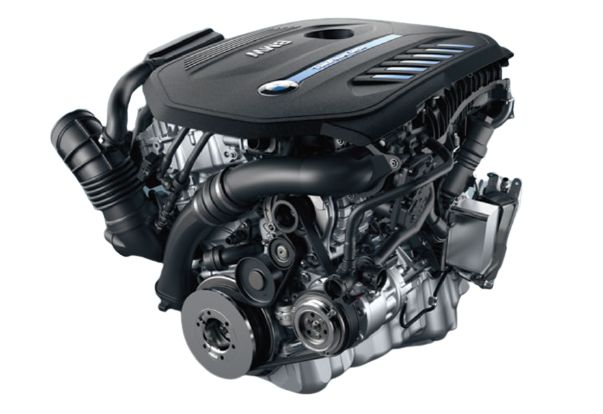Exploring the Evolution of Combustion Engines in Modern Transportation Systems
As we navigate the landscape of contemporary transportation, the evolution of burning engines stands as a testimony to human resourcefulness and design expertise. The interaction of history, innovation, and ecological issues in forming the trajectory of burning engines produces a story that is both engaging and informative.
Early Beginnings of Combustion Engines
How did the concept of combustion engines initial arise in the early phases of transport growth? The origins of combustion engines can be mapped back to the 17th century when the concepts of interior combustion were initial explored.
The advancement minute included the invention of the very first effective gasoline-powered engine by Karl Benz in 1885 - bmw engine. This engine led the way for the growth of the modern automobile, transforming transport systems worldwide. Succeeding innovations by Nikolaus Otto and Gottlieb Daimler better fine-tuned combustion engine modern technology, bring about the mass production of automobiles and the rapid growth of the transport industry
These very early burning engines were identified by their simpleness and effectiveness, laying the foundation for the facility and effective engines utilized in modern transport systems. The evolution of combustion engines has contributed fit the means we travel and transfer items, marking a considerable turning point in the background of transport development.
Shift to Internal Combustion Innovation
The shift to internal burning technology marked a pivotal shift in the advancement of transport systems. This change started in the late 19th century, with inventors like Nikolaus Otto and Gottlieb Daimler developing the first successful interior burning engines. These engines transformed transport by supplying a much more effective and powerful choice to vapor engines and electrical motors.
One of the key advantages of internal burning engines was their capacity to be scaled down to match vehicles, causing the development of bikes and cars. This shift from large, fixed engines to compact, mobile ones led the way for the modern-day transport systems we see today.
The change to inner burning modern technology also stimulated developments in fuel modern technology, leading to the growth of gasoline and diesel as main gas resources for lorries. This shift not just made transport a lot more obtainable to the masses but likewise laid the foundation for the oil and gas sector to come to be important to global economies.
Influence of Combustion Engines on Transportation
The fostering of burning engines in transport systems catalyzed a profound change in the efficiency and rate of international mobility. Combustion engines changed transportation by giving a flexible and reputable source of power for various automobiles, including autos, planes, ships, and trucks. This advancement substantially improved the capability for people and goods to relocate over fars away in much shorter timespan, causing increased connection in between regions and nations.
Additionally, the prevalent usage of burning engines has actually had a substantial influence on economic development. The ability to carry goods successfully has actually spurred profession and business, permitting companies to expand their markets and reach customers worldwide. This has actually facilitated financial development and globalization, as items can currently be carried quicker and in bigger amounts YOURURL.com than in the past.
However, the ecological impact of combustion engines can not be neglected. The combustion of fossil gas has caused air pollution and greenhouse gas discharges, adding to climate adjustment and posing health risks to populaces. bmw engine. Because of this, there is a growing focus on creating alternative propulsion technologies to reduce these unfavorable results and produce an extra sustainable future for transportation
Advancements in Combustion Engine Style
One remarkable development is the development of turbocharged engines, which utilize exhaust gases to drive a generator that presses incoming air, allowing for even more fuel to be burned, resulting in raised power result without a significant increase in engine size. Variable shutoff timing systems have likewise revolutionized engine layout by enhancing airflow at different engine rates, improving both power and effectiveness. These innovations collectively add to the continuous renovation of burning engines in modern transport systems.
Future Trends in Burning Engine Advancement
With technology improvements driving continuous technology, the future of combustion engine growth is positioned to reinvent transportation systems around the world. One of the crucial patterns in combustion engine growth is the press in the direction of greater effectiveness and lowered discharges.
Another popular pattern is the click reference adoption of hybrid innovations in his response burning engines. Hybrid engines incorporate traditional burning technology with electric power, providing enhanced fuel effectiveness and lower emissions. As the auto market changes in the direction of electrification, hybrid combustion engines are seen as a transitional option that connects the space between traditional vehicles and fully electric ones.
Furthermore, the combination of clever technologies, such as expert system and information analytics, is anticipated to play a considerable duty in the future of burning engine growth. These technologies can maximize engine performance in real-time, leading to extra effective combustion procedures and enhanced general lorry performance. Embracing these future patterns will certainly not only drive development in burning engine advancement yet additionally contribute to a much more ecologically pleasant and lasting transportation community.

Final Thought
Finally, the advancement of combustion engines in modern transport systems has actually been noted by considerable advancements in modern technology and design. From the very early beginnings of burning engines to the change to internal burning technology, these engines have had an extensive effect on transportation. Innovations in combustion engine layout remain to drive development in this field, with future patterns concentrating on more boosting efficiency and decreasing emissions. The future of burning engines in transportation looks appealing as research study and development efforts proceed to press borders.
The origins of burning engines can be mapped back to the 17th century when the concepts of internal burning were very first explored. These engines changed transport by offering a much more efficient and effective alternative to heavy steam engines and electrical motors.
